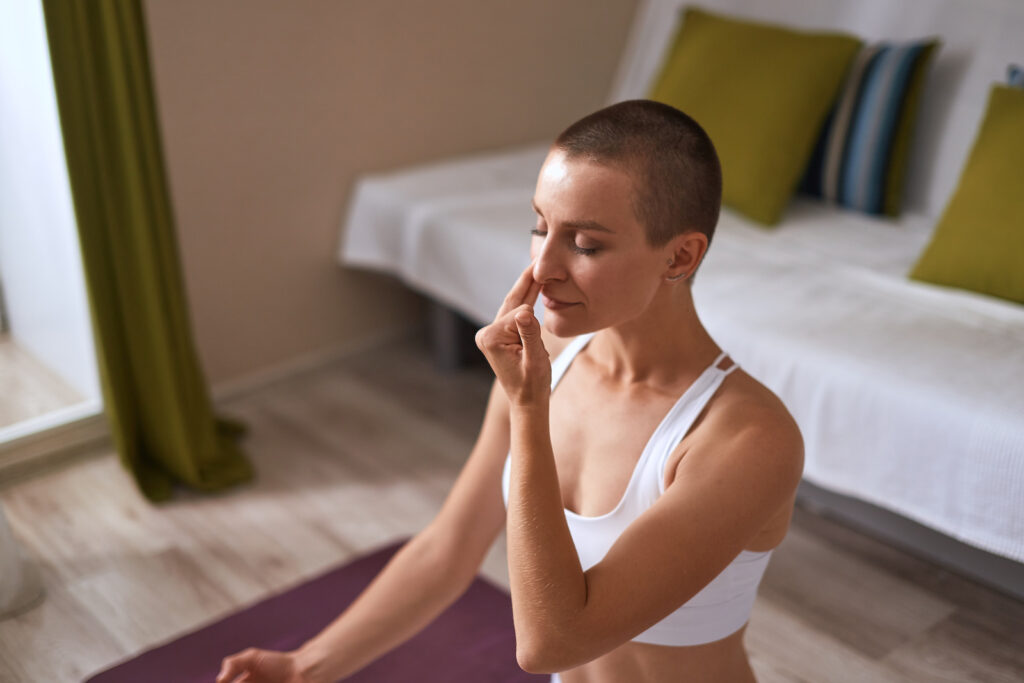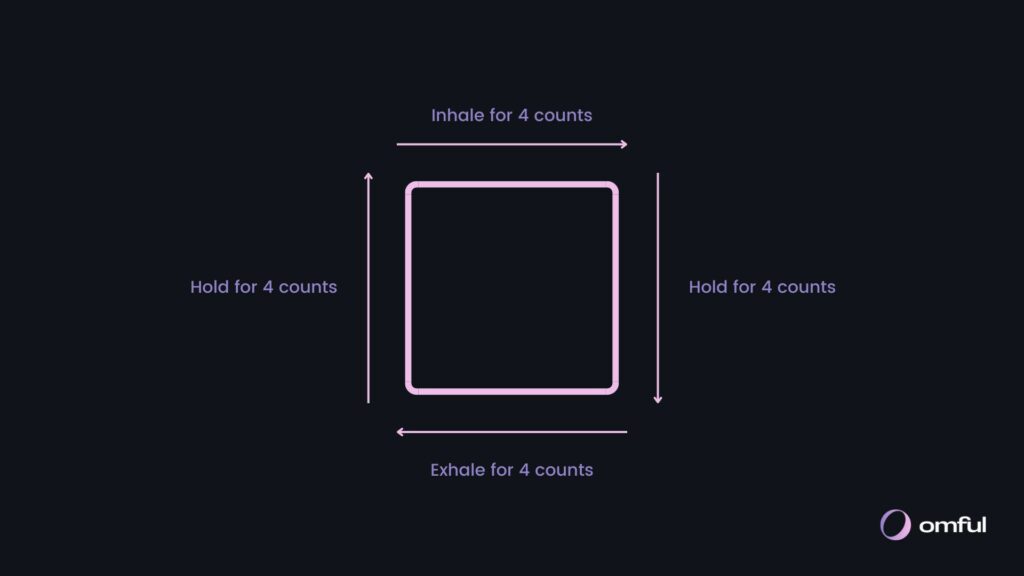Alternate Nostril Breathing is a yoga technique that has been practiced for centuries and can help to transform your mental state in just minutes. In this post, we’ll be taking an in-depth look at Alternate Nostril Breathing—what it is, how it works, its many benefits, and instructions on how to practice correctly. If you want to learn a simple mindfulness exercise that will help bring mental and physical balance into your life, continue reading.
What is Alternate Nostril Breathing?
Also known as Nadi Shodhana Pranayama in Sanskrit, Alternate Nostril Breathing is a yogic breathing practice that involves inhaling and exhaling through one nostril at a time. It has been used for centuries in traditional yoga practices and has gained popularity in recent years as a tool for mindfulness and stress relief. This technique is believed to harmonize the brain’s two hemispheres, resulting in physical, emotional, and mental equilibrium. A study published in the International Journal of Yoga highlights its impact on brainwave coherence and improved cardiovascular functions.
How to Practice Alternate Nostril Breathing
Here’s a simple step-by-step guide to get you started:
- Find a Comfortable Seat: Sit comfortably with your spine straight and shoulders relaxed.
- Position Your Hand: Raise your right hand, and fold your index and middle fingers toward your palm. This leaves the thumb, ring finger, and pinky extended.
- Begin the Breath: Gently close your right nostril with your thumb. Inhale through the left nostril, then close it with your ring finger. Open the right nostril and exhale.
- Switch Sides: Inhale through the right nostril, then close it with the thumb. Open the left nostril and exhale.
- Repeat: Continue this pattern for a few minutes, starting and ending with an inhale on the left side.
If it feels comfortable, rather than folding your index and middle fingers to your palm, you can bring them to your third eye (the point between your eyebrows). The index and middle finger can rest there for the duration of the practice.
Benefits of Alternate Nostril Breathing
Alternate Nostril Breathing offers a host of benefits:
- Stress Reduction: The practice has been shown to activate the parasympathetic nervous system, which helps to manage the body’s response to stress, as reported in Frontiers in Human Neuroscience.
- Lower Blood Pressure: Practicing Alternate Nostril Breathing had beneficial effects in blood pressure and improvements in tasks that required hand-eye coordination.
- Cognitive Function: A study showed that when people breathed through their left nostril, they performed better on spatial tasks (tasks involving understanding of space and shapes). There was also a slight improvement in verbal tasks.
When to Avoid Practicing Alternate Nostril Breathing
While Alternate Nostril Breathing is generally safe, it’s best to avoid the practice if you have a cold or nasal congestion. If you’re new to breathing practices or have any health concerns, it’s always wise to consult a healthcare provider or a trained yoga instructor before beginning.
Tips to Start Practicing Alternate Nostril Breathing at Home
Embarking on your Alternate Nostril Breathing journey at home is simple and accessible. Here are some tips to get you started:
- Begin Gradually: Start with just a few minutes of practice and gradually increase as you grow more comfortable with the technique.
- Create a Calm Environment: Choose a quiet, comfortable space where you won’t be disturbed.
- Use a Timer: To maintain your focus on the practice, consider using a timer set to the desired length of your session.
- Patience and Persistence: Getting used to the practice may take some time. Be patient with yourself.
Remember that it may take some practice to master Alternate Nostril Breathing. Taking time with each step and focusing on keeping your breath smooth and even will help you succeed. Incorporating this practice into your daily routine is the best way to experience its full benefits. Remember to start slowly and build up over time until you find the frequency of practice that works for you.
To continue your exploration of different breathing practices, we invite you to delve into our comprehensive guides on different breathing exercises, for instance, our post on Diaphragmatic Breathing.


